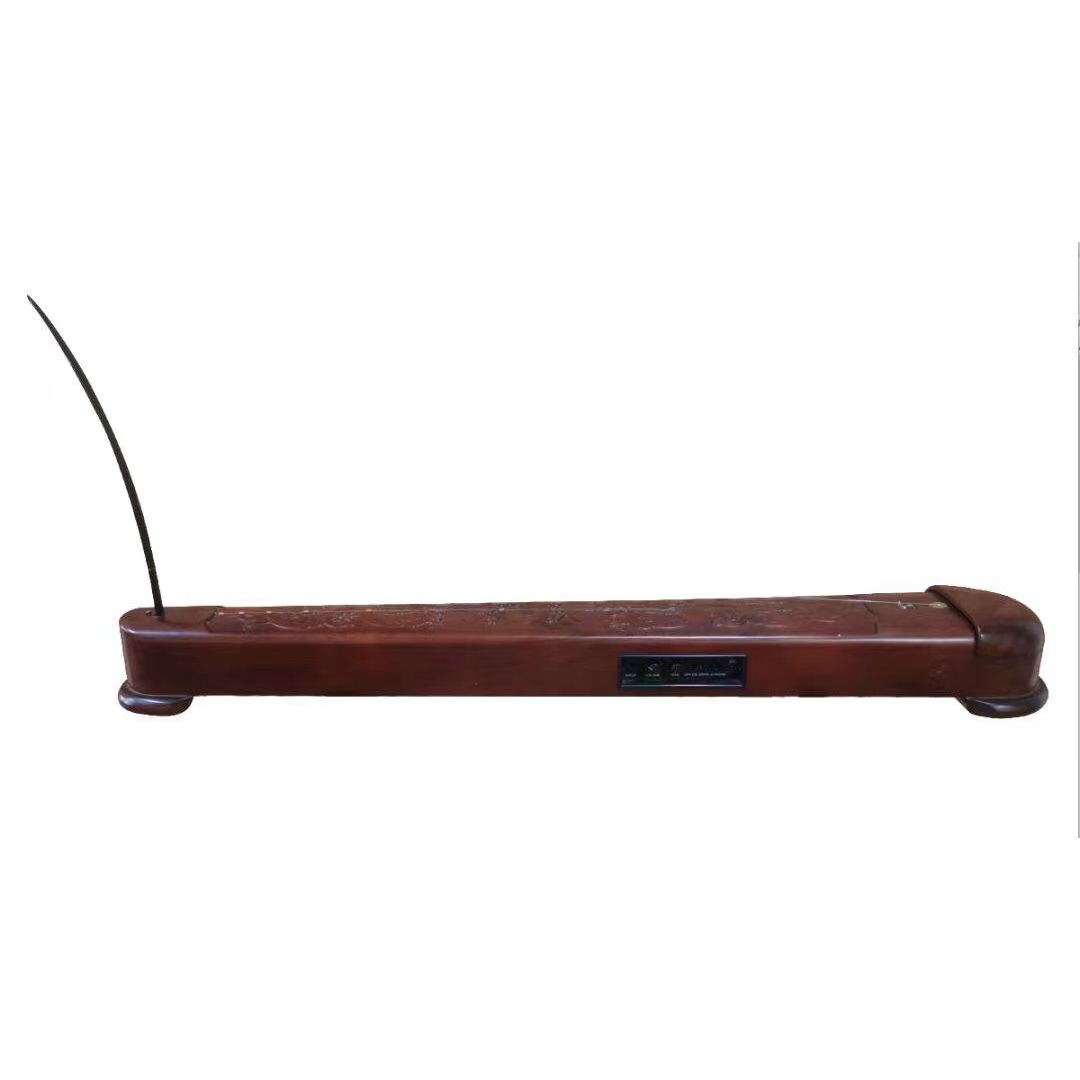monophonic overview
 The single-stringed qin (pinyin: dú xián qín) is an ancient folk bamboo musical instrument of the Jing nationality, also known as the single-stringed qin and one-stringed qin. The single-stringed qin was originally only used to accompany poets to recite poems, and later developed to accompany songs and dances or ensemble with other musical instruments ( You often play together with the dongxiao); now it is mostly used for solo performance, but also for ensemble or singing and dancing accompaniment. In ethnic bands, the lyre is often used as a color instrument. The monochord is an overtone musical instrument with a unique playing technique. It can play two notes on one string at the same time. The tone is soft and beautiful, and it is suitable for expressing long and lyrical melody.
The single-stringed qin (pinyin: dú xián qín) is an ancient folk bamboo musical instrument of the Jing nationality, also known as the single-stringed qin and one-stringed qin. The single-stringed qin was originally only used to accompany poets to recite poems, and later developed to accompany songs and dances or ensemble with other musical instruments ( You often play together with the dongxiao); now it is mostly used for solo performance, but also for ensemble or singing and dancing accompaniment. In ethnic bands, the lyre is often used as a color instrument. The monochord is an overtone musical instrument with a unique playing technique. It can play two notes on one string at the same time. The tone is soft and beautiful, and it is suitable for expressing long and lyrical melody.The monochord with an ancient shape and a relatively simple structure is composed of a body (sound box), a peg, a rocker, a resonance tube, strings and a pick rod. Due to the different materials, it is divided into two types: bamboo and wood.
The traditional solo pieces for solo strings include "Mountains and Flowing Waters", "Riding Horses", "Liu Sanjie" and so on.
Today, the most widely used monochord, and has been used in the world music stage, specifically refers to the vietnamese monochord. This instrument was originally used in ensemble music, but it was later improved and connected with electronic audio to become an important solo instrument. One of the strings of the monophonic piano is placed on a narrow rectangular resonance box, one end is fixed to the base, and the other end is fixed to a flexible metal strip. When playing, the player touches the strings with the pinky finger of the right hand, and the remaining three fingers hold the plectrum to strum the strings to produce overtones.
- Chinese name:monophonic
- popular area:Fangcheng Autonomous County of Guangxi Zhuang Autonomous Region
- Pinyin:dú xián qín
- nickname:One-stringed violin, one-stringed violin
- type:plucked instruments
overview of other similar instruments
- sanyanxiao overview
- Daguangxian overview
- Leiqin overview
- hahao overview
- yandundagu overview
- Han Xiaozheng overview
- Fang Xiang overview
- guanzi overview
- zhuqin (Dao Qin) overview
- zhuiqin overview
- bangzi overview
- three-stringed piano overview
- Gehu overview
- xiao overview
- xiaokonghou overview
- Konghou overview
- Sheng overview
- suona overview
- hulusi overview
- gushao overview
 渝公网安备 50010702504639号
渝公网安备 50010702504639号